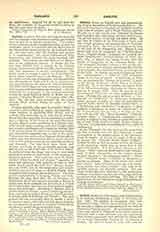

Garneau, FRANCOIS-XAVIER, a French Canadian historian, b. at Quebec, June 15, 1809, of Francois-Xavier Garneau and Gertrude Amiot; d. February 2, 1866. After a short elementary course, he studied law, having succeeded by private effort in supplying the lack of classical instruction. He held the office of city clerk from 1844 till his death. In 1845 appeared the first volume of his “Histoire du Canada“, an heroic venture, considering the restoration to France after the Conquest of nearly all the civil and military archives. When, through Dr. O’Callaghan, the United States Government had secured copies of the correspondence of the French colonial governors, Garneau went to Albany to study these documents and gather materials for his future volumes, which appeared successively in 1846 and 1848, the third volume recording events as late as the Constitution of 1792. The work was favorably received by both English and French. A second edition includes the period from 1792 to the Union (1840). A third edition, 1859, had an English translation, which, however, is not reliable.
Garneau’s history must be judged according to the spirit of his time. Its first pages were written shortly after the troubles of 1837 and 1838, at the dawn of the Union of the Canadas, which was the outcome and penalty of the Rebellion. The prospect was gloomy for Lower Canada, and a patriot like Garneau, howsoever impartial, could not easily repress his feelings. More reprehensible are his opinions on certain points of doctrine, and his unjust criticism of church authority and influence. These may be explained by the nature of the books he had studied without proper guidance and the antidote of a sound philosophical training. These blemishes are not found in the last edition, revised at his request by a competent ecclesiastic. In fact, Garneau was ever a practical Catholic and died a most edifying death. The title of “national historian” rightly belongs to this pioneer in the field of Canadian history, who spent twenty-five years of patient research and patriotic devotedness on a work destined to draw the attention of Europe and the United States to the glories of his country.
LIONEL LINDSAY

